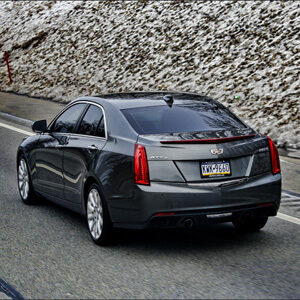
Tesla’s sales gallery. Source: Flickr
Will Tesla (NASDAQ:TSLA) go out of business in 2024?
That’s a question that is often pondered by investors and Tesla’s vehicle owners.
Investors are particularly concerned about Tesla’s liquidity and the company’s cash flow.
On the other hand, Tesla’s vehicle owners are worried about their vehicles if Tesla does go out of business.
There are a few things that can topple Tesla.
The most obvious one is debt.
As of 3Q 2023, Tesla has over $3 billion of debt and leases, according to this article: Tesla total debt.
Tesla will go bankrupt if it can’t repay or service the debt.
Other reasons that may trigger Tesla’s bankruptcy include business deterioration, loss of competitiveness, outdated technology and lawsuits.
While these reasons are valid to some degree, they are difficult to measure and quantify. However, we can look at the company’s balance sheets and investigate to figure out how likely Tesla will go out of business.
This article delves into the subject of Tesla’s potential bankruptcy and explores the company’s short-term liquidity.
Please use the table of contents to navigate this page.
Table Of Contents
Overview
O1. Definitions
Commitments
A1. Uncovering Tesla Financial Health
A2. Commitments In 2024
A3. Adjusted Commitments
Can Tesla Meet Its Commitments?
B1. Cash Vs Current Liabilities
Liquid Assets
C1. Tesla’s Other Liquid Assets
C2. Liquid Assets Vs Current Liabilties
Adjusted Commitments
D1. Liquid Assets Vs Adjusted Commitments
Conclusion And Reference
S1. Conclusion
S2. References and Credits
S3. Disclosure
Definitions
To help readers understand the content better, the following terms and glossaries have been provided.
Prepaid Expenses: Prepaid expenses are expenses that have been paid for in advance but have not yet been used or consumed. These expenses are initially recorded as assets on a company’s balance sheet and are gradually expensed over time as they are used up or consumed.
Examples of prepaid expenses include prepaid rent, insurance premiums, and prepaid advertising fees. By recording these expenses as assets, companies can better match their expenses with the period in which they are used or consumed, which can improve the accuracy of their financial statements.
Receivables: Receivables refer to the money owed to a company by its customers or clients for goods or services that have been provided but not yet paid. They are considered assets on a company’s balance sheet since they represent the amount of cash the company expects to receive in the future.
Accounts receivable is the most common type of receivable, which is created when a company extends credit to its customers and invoices them for payment at a later date. Other types of receivables include notes receivable, which are formal agreements to pay a certain amount of money at a future date, and advances or deposits received from customers.
Uncovering Tesla Financial Health
One effective way to evaluate Tesla’s financial health is to review the company’s balance sheets.
By doing so, investors can quickly identify Tesla’s total commitments that are due within a year from the date the balance sheets are prepared.
By comparing this information with Tesla’s short-term liquidity, investors can determine whether the company’s cash reserves are sufficient to meet these commitments.
If there is a significant difference between the commitments and the available cash, this could be a warning sign of financial trouble.
In such cases, investors should examine the company’s financial reports more closely to understand how it plans to meet its obligations.
In the following discussions, we will take a closer look at Tesla’s balance sheets to determine whether the company is in a precarious financial situation or whether it is financially stable.
Let’s get started!
Tesla Commitments In 2024
The following table depicts Tesla’s short-term commitments that come due in 2024:
Tesla’s current liabilities
| As at 31 December | |||
|---|---|---|---|
| Q3 2023 | 2022 | 2021 | |
| Accounts payable | $13,937 | $15,255 | $10,025 |
| Accrued liabilities and other | $7,636 | $7,142 | $5,719 |
| Deferred revenue | $2,206 | $1,747 | $1,447 |
| Customer deposits | $894 | $1,063 | $925 |
| Current portion of debt and finance leases | $1,967 | $1,502 | $1,589 |
| Total Current Liabilities | $26,640 | $26,709 | $19,705 |
The short-term commitments, or current liabilities, represent Tesla’s obligations that need to be fulfilled within a year from the date of the balance sheets.
As per the latest balance sheets dated September 30, 2023, Tesla has short-term liabilities that it needs to satisfy by September 30, 2024.
These commitments encompass a mix of cash payments and product deliveries.
For instance, deferred revenue and customer deposits require the company to deliver products, while some other commitments, such as payments to suppliers, employees, and creditors, are cash-related.
Based on the table above, Tesla’s total short-term commitments amount to approximately $26.6 billion for the fiscal year 3Q 2023, which needs to be fulfilled between Sept 30, 2023, and Sept 30, 2024.
In summary, Tesla has a significant obligation to deliver a combination of cash and products, which is estimated to cost $26.6 billion over the next year.
Adjusted Commitments
Tesla’s deferred revenue and customer deposits
| As at 31 December | |||
|---|---|---|---|
| Q3 2023 | 2022 | 2021 | |
| Deferred revenue | $2,206 | $1,747 | $1,447 |
| Customer deposits | $894 | $1,063 | $925 |
As we discussed earlier, some of Tesla’s short-term commitments are not in the form of cash. These include deferred revenue and customer deposits.
While these are liabilities for Tesla, they do not involve the exchange of cash. In fact, Tesla has already received the cash upfront for these liabilities.
Therefore, it is important to note that Tesla’s actual short-term liabilities are slightly less than the figures shown.
To account for this, we need to exclude these non-cash liabilities from the total current liabilities.
After making this adjustment, we found that Tesla’s total short-term liabilities for fiscal 3Q 2023 came to about $23.3 billion.
Cash Vs Current Liabilities
Tesla’s cash vs total short-term liabilities
| As at 3Q 2023 ($ Millions) | |
|---|---|
| Cash & Cash Equivalents + Short-Term Deposits | Total Current Liabilities |
| $26,077 | $26,640 |
The table above compares Tesla’s combined cash and short-term deposits with the total current liabilities for the fiscal year 3Q 2023.
As of 3Q 2023, Tesla’s cash and cash equivalents together with short-term deposits totaled US$26.1 billion.
On the other hand, Tesla’s total short-term commitments totaled US$26.6 billion, slightly larger than the combined cash and short-term deposits.
Therefore, Tesla’s cash and short-term deposits alone is not sufficient to meet its short-term commitments that come due before Sept 30, 2024.
Tesla’s Other Liquid Assets
Tesla’s current assets
| As at 31 December | |||
|---|---|---|---|
| 3Q 2023 | 2022 | 2021 | |
| Cash and cash equivalents | $15,932 | $16,253 | $17,576 |
| Short-term investments | $10,145 | $5,932 | $131 |
| Accounts receivable, net | $2,520 | $2,952 | $1,913 |
| Inventory | $13,721 | $12,839 | $5,757 |
| Prepaid expenses and other current assets | $2,708 | $2,941 | $1,723 |
| Total Current Assets | $45,026 | $40,917 | $27,100 |
Tesla’s liquid assets, apart from cash and short-term deposits, include accounts receivable and inventory, as shown in the table above.
These liquid assets are expected to be converted into cash within a year and can be as helpful as cash and cash equivalents.
They can potentially help Tesla cover a portion, if not all, of its short-term commitments.
If we exclude inventory and prepaid expenses, Tesla’s total liquid assets would be much greater, amounting to about US$28.6 billion as of fiscal Q3 2023.
With this level of liquid assets, Tesla’s total liquid assets would be more than sufficient to satisfy its total short-term commitments.
Tesla’s Liquid Assets Vs Current Liabilties
Tesla’s liquid assets vs total short-term liabilities
| As at 3Q 2023 ($ Millions) | |
|---|---|
| Cash & Cash Equivalents + Short-Term Deposits + Receivables | Total Current Liabilities |
| $28,597 | $26,640 |
Based on the table provided, Tesla’s total liquid assets amount to approximately US$28.6 billion, taking into account its cash, accounts receivable, and short-term deposits.
Meanwhile, the company’s total current liabilities are at US$26.6 billion. This means that Tesla can easily fulfill its future commitments with its significant liquid assets.
In fact, if the company opted to pay off its total current liabilities, it would still have a surplus of $1 billion in liquid assets.
In summary, Tesla’s financial condition is in good standing.
Tesla’s Liquid Assets Vs Adjusted Current Liabilties
Tesla’s liquid assets vs adjusted short-term liabilities
| As at 3Q 2023 ($ Millions) | |
|---|---|
| Cash & Cash Equivalents + Short-Term Deposits + Receivables | Adjusted Current Liabilities |
| $28,597 | $23,322 |
When compared to the adjusted current liabilities, Tesla’s liquid assets, which include cash, short-term deposits, and receivables, have an even greater margin.
For instance, after paying off the adjusted current liabilities, Tesla will still have more than $5 billion in excess cash.
Conclusion
Again, will Tesla possibly go out of business in 2024?
Based on the analysis conducted, it is unlikely that Tesla will go out of business in 2024.
This is because the company’s available liquid assets reported in fiscal 3Q 2023 are more than sufficient to cover the upcoming liabilities.
However, this scenario will only remain valid if Tesla’s operations are not significantly affected in the next 12 months.
If one of Tesla’s Gigafactories is destroyed, it could drastically impact Tesla’s operations and severely affect its cash flow conversion cycle.
In that case, Tesla may go under.
But for now, there is no need to worry as Tesla’s financial health is solid and in good shape.
References and Credits
1. All financial figures presented in this article were obtained and referenced from Tesla’s quarterly and annual reports, SEC filings, press releases, investor presentations, etc., which are available at Tesla Financial Reports.
2. Featured images in this article are used under creative commons license and sourced from the following websites: mangopulp2008 and Romain DECKER.
Disclosure
References and examples such as tables, charts, and diagrams are constantly reviewed to avoid errors, but we cannot warrant the total correctness of all content.
The content in this article is for informational purposes only and is neither a recommendation nor a piece of financial advice to purchase a stock.
If you find the information in this article helpful, please consider sharing it on social media and provide a link to this article from any website so that more articles like this can be created.
Thank you!










